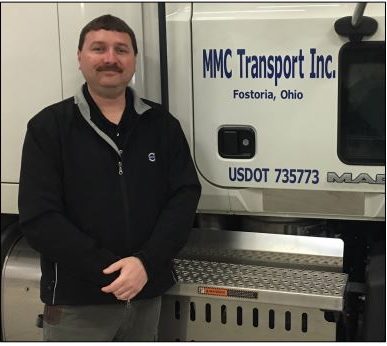Developing a fleet management program is a never-ending process. And that’s a good thing, so says Jerry Robertson, chief technology officer for BOLT System. “The trucking industry is very liquid and ever-changing,” he says. “We’re changing as well by building activity-based pay portals into our management system. We think there is huge upside for both fleets and drivers. We expect a sea-change in how drivers are paid.”
According to Robertson, it’s already starting to happen with many of BOLT’s customers, who can identify different activities that a driver encounters, then have pay assigned to each task. “With the flexible system we’ve set up, we can easily help our customers document all work flow, with various pay standards, and streamline that into payroll. Fleet managers are happy since they can bill
shippers for all services delivered, and drivers are happy, since they’re paid for each of their activities. The primary pay factors are miles, stops, and hours – it’s difficult to quantify hours and that’s the key target for activity-based pay.” This is something not all management systems can capture, says Robertson. “But, it’s becoming increasingly important, especially now since California is requiring this type of information.”
According to Robertson, private fleets and dedicated carriers are the main sectors adopting activity-based pay. “We have customers where the driver delivers the load, then unloads, even does some assembly work on the shipment. “We have another customer who documents touch and no-touch mileage segments, while fulfilling required documentation for product returns. Each step is paid differently and we’ve set up our system to capture each activity with corresponding pay structure. That way, when payroll is completed, the right amount is tendered, and the driver gets a printout of all activities to document proper payroll.” Jeremy Decker, transportation manager – Mennel Milling Corp.
Robertson says there are literally dozens of activities that can easily be inputted and set up for tracking. “We do it all the time for our customers and it’s a great help for them to understand all the different activities their drivers encounter.”
Activity-based pay is an important feature for Jeremy Decker, transportation safety manager for Mennel Milling Corporation, of Fostoria, Ohio. The company, which operates 70 trucks, delivers up to 200 different types of flour, from its six mills, to customers in a regional operation. “Dispatch and pay were like a jigsaw puzzle without a box top for guidance,” recalls Decker, who is a CTP (NPTC Certified Transportation Professional). “We had originally gone with the 800-pound gorilla in a fleet management program, but didn’t have success – it was expensive, offered platforms we didn’t need or use, but still paid for. Plus, it wasn’t flexible for our needs. BOLT System has been far less complex. It’s tailored for our needs, and it saves us time and money.”
The company pays its drivers in “segments,” with information easily plugged into the company’s PeopleNet ELD. In addition, geo-fencing at mills allows for faster input. Pay can be broken out per mile, on longer trips for example, or it can have a flat load rate. Plus loading can have a pay structure, which can include a self-load fee at the mill. What’s more, the time of day can come into play. “If, for example, a delivery is made after midnight on a Friday, a multiplier can kick in to assign additional value,” said Decker. “There are a lot of moving parts with our structure. We like how BOLT makes all of this easy for us, and eliminates extra paperwork and tracking on our end. And, our drivers like it too. They see everything and pay is transparent. Plus, they save time every week too – they no longer have to manually record all of their time.”

